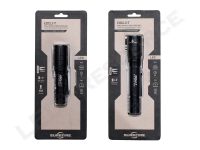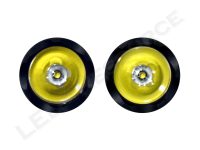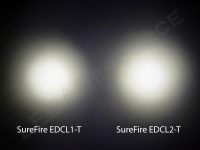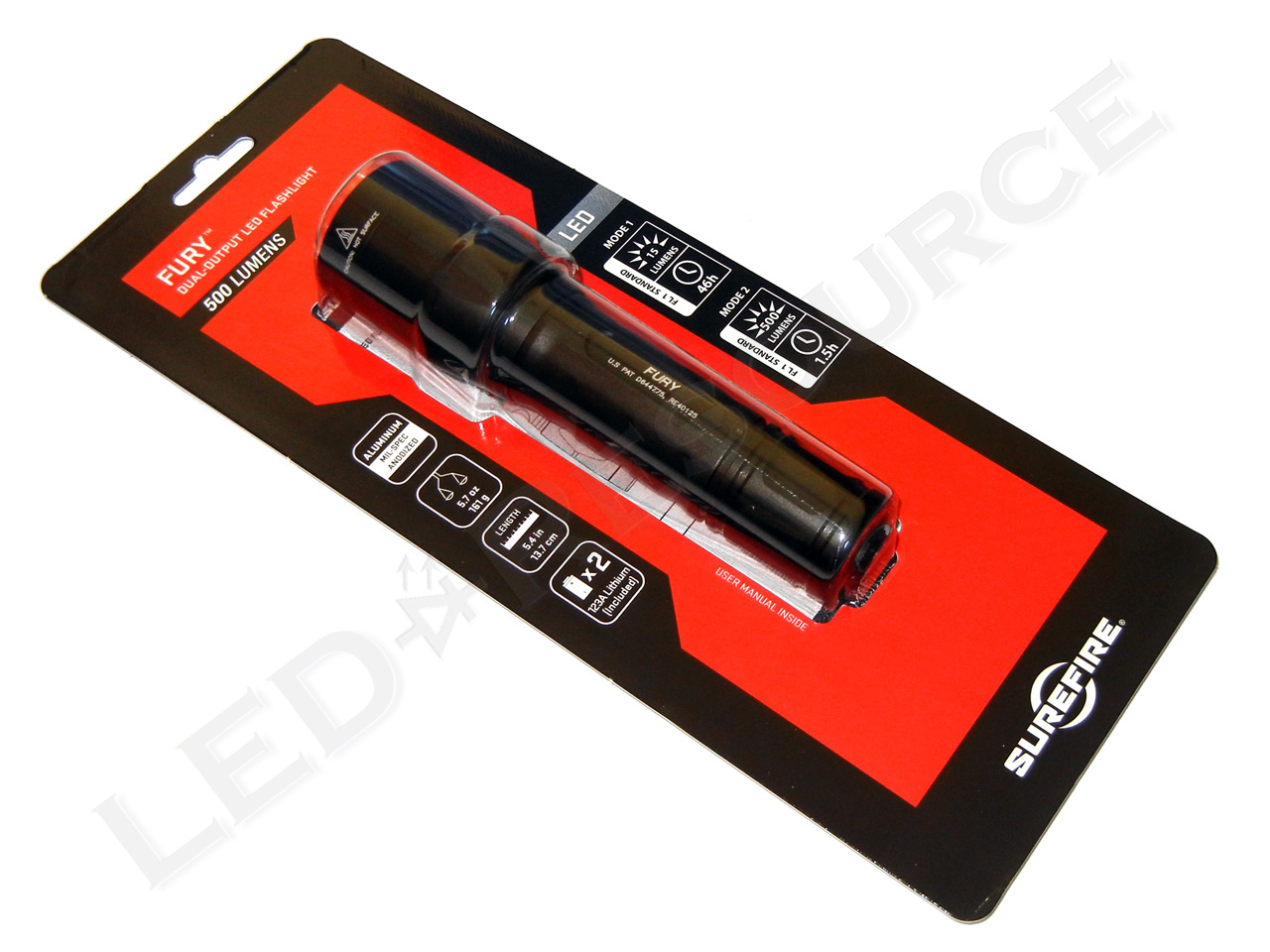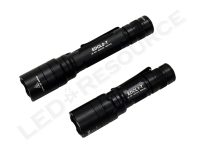 Back in late 2017, the SureFire EDCL1-T and EDCL2-T were released as the successor to the EB1 and EB2 “Backup” family of lights which had launched in 2013. Unlike the EB1 and EB2 which were offered in both Tactical and Clicky versions, the EDCL1-T and EDCL2-T are only available with the Tactical switch as the names suggest. In our new Quick Test review format, we will be taking a look at the performance of the EDCL1-T and EDCL2-T with a focus on technical details.
Back in late 2017, the SureFire EDCL1-T and EDCL2-T were released as the successor to the EB1 and EB2 “Backup” family of lights which had launched in 2013. Unlike the EB1 and EB2 which were offered in both Tactical and Clicky versions, the EDCL1-T and EDCL2-T are only available with the Tactical switch as the names suggest. In our new Quick Test review format, we will be taking a look at the performance of the EDCL1-T and EDCL2-T with a focus on technical details.
Key Specifications
- Output (EDCL1-T): 500 lumens high, 5 lumens low
- Output (EDCL2-T): 1,200 lumens high, 5 lumens low
- Intensity (EDCL1-T): 7,600 candela
- Intensity (EDCL2-T): 11,300 candela
- Runtime (EDCL1-T): 1h high, 45h low
- Runtime (EDCL2-T): 1h high, 60h low
- Battery: 1 x 123A (EDCL1-T), 2 x 123A (EDCL2-T)
- Length: 4.5″ (EDCL1-T), 5.8″ (EDCL2-T)
- Diameter: 1.1″ bezel, 0.8″ body
- Weight with Batteries: 3.3 oz. (EDCL1-T), 4.1 oz. (EDCL2-T)
- Colors: Black
- Warranty: Limited Lifetime
- MSRP: $225-$259
- Actual Pricing: ~$200-$230
Packaging
Included in the blister packaging are: SureFire EDCL1-T (or EDCL2-T), 1 (or 2) x 123A lithium batteries (installed), and user manual.
Batteries
Like most SureFire flashlights, the EDCL1-T and EDCL2-T are powered by lithium 123A batteries and can also be used with 3.2V rechargeable lithium-phosphate batteries.
Modes
Two output levels can be activated using the tail switch.
Low (5 lumens)
Reduced output mode is activated by a half-press for momentary, or a quarter-twist for constant-on.
High (500 or 1200 lumens)
Maximum output is activated by a full-press for momentary, or almost a full-twist for constant-on. Momentary maximum output can always be activated by fully pressing the tailcap, even from constant-on low output.
Performance
We weren’t able to definitely identify the emitters used due to the opaque Total Internal Reflection (TIR) optics, but it seems most likely that the EDCL1-T uses a Cree XP-L LED and the EDCL2-T uses a Cree XHP35 LED.
Runtime
If you haven’t read our article about runtime graphs and the ANSI FL1 Standard, please click here.
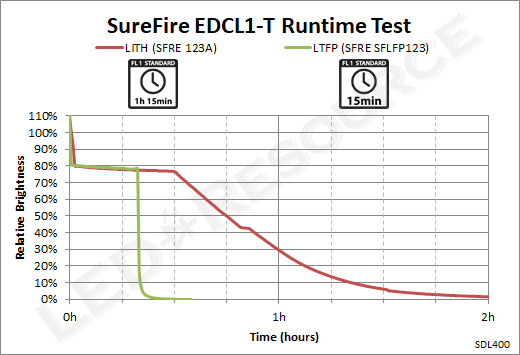
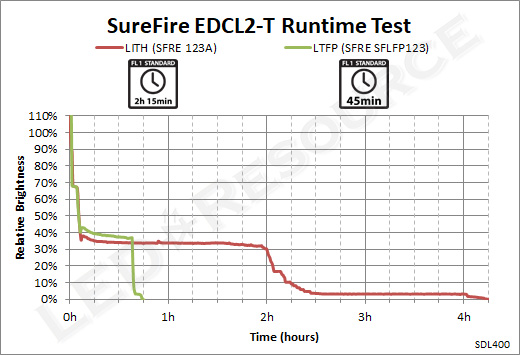
While the initial output from the EDCL1-T and EDCL2-T is impressive compared to previous models, it’s clear that some compromises had to be made in order to maintain a reasonable amount of runtime. The reality is that maximum output can only be sustained for a short period of time before the light becomes too hot, both for the user and the electronics. However, considering that these are currently the only models in SureFire’s lineup to feature the gas pedal style switch, half-press for momentary low or full-press for momentary high, it’s easy to use these lights in bursts and that’s most likely how these lights will be used in Every Day Carry (EDC) type of scenarios rather than constant-on. Such usage patterns would not be affected by the drop in output, which is especially noticeable on the EDCL2-T, but these lights still provide better regulation compared to older models, especially the EB1 Backup or E1D LED Defender.
Conclusion
Between the EDCL1-T and EDCL2-T, the single cell light comes ahead as a clear winner in terms of practicality, offering a great balance of performance without the added length of a two-cell light. That’s not to say that the EDCL2-T is not capable, but many of the newer Dual Fuel lights such as the Fury DFT offer rechargeable options and keep running costs low compared with 123A batteries. What those models lack is the smooth beam pattern of a TIR optic, which is a small difference but gives these lights a more premium feel. No other model within SureFire’s current lineup features either the gas pedal switch or a TIR optic, let alone both, so that’s two reasons to pick up an EDCL1-T or EDCL2-T.
Related Links

